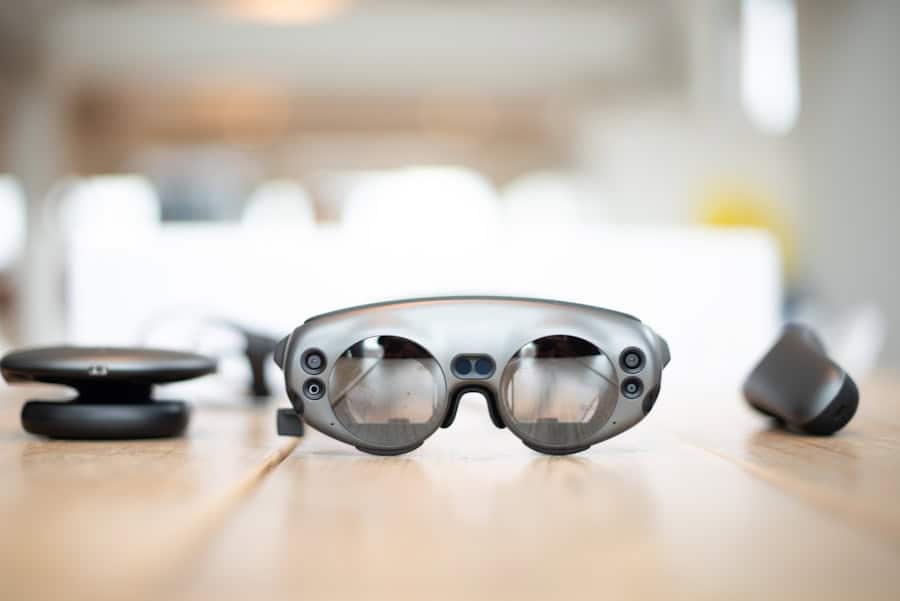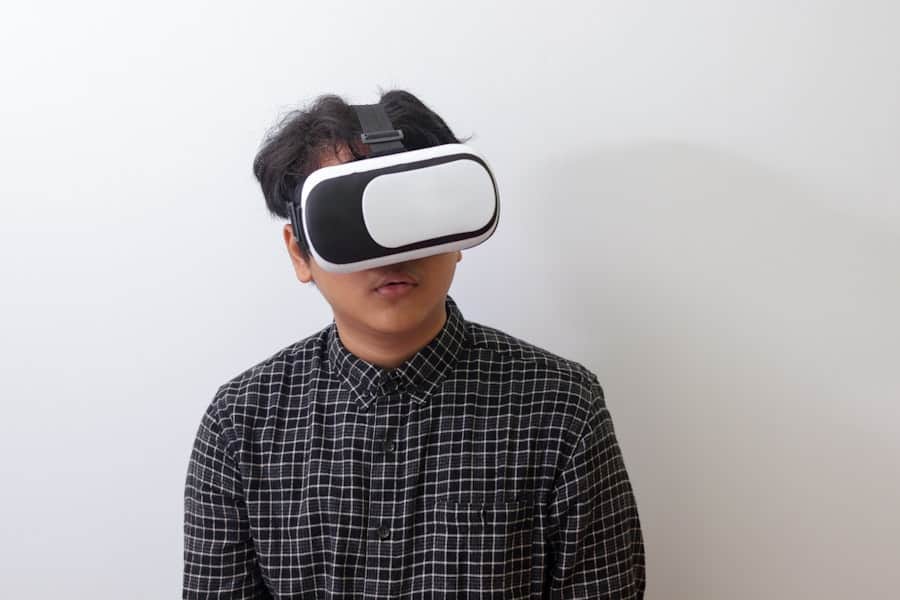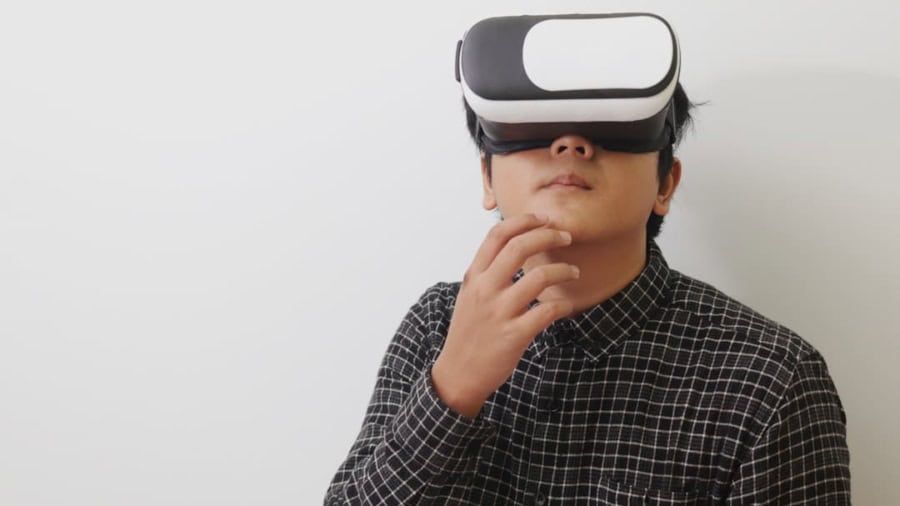Augmented Reality (AR) has emerged as a transformative technology in various sectors, and education is no exception. By overlaying digital information onto the physical world, AR creates immersive experiences that can enhance learning and engagement. This technology allows educators to present complex concepts in a more accessible manner, bridging the gap between theoretical knowledge and practical application.
As classrooms evolve, the integration of AR into educational practices is becoming increasingly prevalent, offering innovative ways to captivate students’ attention and foster deeper understanding. The potential of AR in education extends beyond mere novelty; it fundamentally alters how information is consumed and understood. Traditional teaching methods often rely on static materials such as textbooks and lectures, which can limit student interaction and engagement.
In contrast, AR facilitates a dynamic learning environment where students can interact with 3D models, simulations, and other digital content in real-time. This interactivity not only makes learning more enjoyable but also encourages critical thinking and problem-solving skills, essential competencies in today’s fast-paced world.
Key Takeaways
- AR in education enhances learning by providing interactive and immersive experiences for students.
- Interactive storytelling in education benefits students by promoting engagement, critical thinking, and creativity.
- AR enhances interactive storytelling by overlaying digital content onto the real world, creating a more engaging and interactive experience for students.
- Examples of AR-enabled interactive storytelling in education include virtual field trips, interactive historical reenactments, and immersive language learning experiences.
- AR in education has a positive impact on student engagement and learning, leading to increased motivation, retention, and understanding of complex concepts.
The Benefits of Interactive Storytelling in Education
Interactive storytelling is a pedagogical approach that combines narrative with active participation, allowing students to engage with content on a deeper level. This method fosters creativity and imagination, enabling learners to explore different perspectives and outcomes based on their choices. By immersing students in a narrative, interactive storytelling can make complex subjects more relatable and easier to grasp.
For instance, history lessons can be transformed into engaging narratives where students assume the roles of historical figures, making decisions that influence the course of events. Moreover, interactive storytelling promotes collaboration among students. When learners work together to navigate a story, they develop communication skills and learn to appreciate diverse viewpoints.
This collaborative aspect is particularly beneficial in fostering a sense of community within the classroom. Students are more likely to engage with the material when they feel connected to their peers and invested in the outcome of the story. The emotional resonance of storytelling also enhances memory retention, as individuals are more likely to remember information that is tied to a compelling narrative.
How AR Enhances Interactive Storytelling

The integration of AR into interactive storytelling takes this educational approach to new heights by adding a layer of interactivity that traditional methods cannot provide.
For example, when studying a literary work, students can use AR applications to see characters come to life or explore the settings described in the text.
This visual representation helps solidify their understanding of the material and encourages them to engage with it on a deeper level. Additionally, AR can facilitate personalized learning experiences within interactive storytelling. By allowing students to make choices that affect the narrative’s direction, educators can cater to individual learning styles and preferences.
For instance, a student who struggles with reading comprehension may benefit from an AR-enhanced story that provides visual cues and interactive elements to aid understanding. This adaptability not only supports diverse learners but also empowers students to take ownership of their educational journey.
Examples of AR-Enabled Interactive Storytelling in Education
Several innovative examples illustrate how AR-enabled interactive storytelling is being implemented in educational settings. One notable instance is the use of AR applications like “Merge Cube,” which allows students to hold a physical cube that transforms into various 3D objects when viewed through a smartphone or tablet. In a science class, for example, students can explore the anatomy of the human body by manipulating a 3D model that appears on the cube, providing an engaging way to learn about complex biological systems.
Another compelling example is “Zombies, Run!” an interactive storytelling app that combines fitness with narrative-driven gameplay. While primarily designed for physical activity, it has been adopted by educators to encourage students to engage with literature and storytelling through running missions that unfold as they progress. As students complete tasks or run specific distances, they unlock chapters of a story, blending physical education with literacy skills in an innovative manner.
The Impact of AR on Student Engagement and Learning
The impact of AR on student engagement is profound.
AR’s ability to create immersive environments captures students’ attention and stimulates curiosity, making them more eager to participate in lessons.
This heightened engagement can lead to improved academic performance as students become more invested in their education. Furthermore, AR enhances experiential learning by allowing students to experiment and explore concepts in a safe environment. For instance, in a chemistry class, students can use AR simulations to conduct virtual experiments without the risks associated with handling real chemicals.
This hands-on approach not only reinforces theoretical knowledge but also cultivates critical thinking skills as students analyze results and draw conclusions based on their observations.
Challenges and Limitations of AR in Interactive Storytelling

Despite its numerous advantages, the implementation of AR in education is not without challenges. One significant barrier is the accessibility of technology. Not all schools have the necessary resources or infrastructure to support AR applications effectively.
Disparities in access to devices such as tablets or smartphones can create inequities among students, hindering the potential benefits of AR-enhanced learning experiences. Additionally, there is a learning curve associated with integrating AR into existing curricula. Educators may require training to effectively utilize AR tools and incorporate them into their teaching strategies.
Without proper support and professional development opportunities, teachers may struggle to implement these technologies effectively, limiting their impact on student learning. Furthermore, there is a risk that reliance on technology could detract from fundamental teaching practices if not balanced appropriately.
Best Practices for Implementing AR in Education
To maximize the benefits of AR in education, several best practices should be considered when implementing this technology. First and foremost, educators should ensure that AR applications align with curriculum objectives and learning outcomes. This alignment ensures that technology serves as a tool for enhancing educational goals rather than distracting from them.
Collaboration among educators is also crucial for successful implementation. Teachers can share experiences and strategies for integrating AR into their lessons, fostering a community of practice that encourages innovation and creativity. Additionally, involving students in the selection and evaluation of AR tools can provide valuable insights into their preferences and needs, leading to more effective learning experiences.
Moreover, it is essential to maintain a balance between technology use and traditional teaching methods. While AR offers exciting possibilities for engagement, it should complement rather than replace foundational pedagogical practices. By blending interactive storytelling with established teaching techniques, educators can create a holistic learning environment that caters to diverse learners.
The Future of AR-Enabled Interactive Storytelling in Education
As technology continues to evolve, the future of AR-enabled interactive storytelling in education holds immense promise. Advancements in hardware and software will likely lead to more sophisticated applications that offer even greater interactivity and realism. For instance, developments in artificial intelligence could enable personalized narratives that adapt dynamically based on individual student choices and learning progress.
Furthermore, as educators become more familiar with AR technologies, we may see an increase in collaborative projects that leverage this medium across disciplines. Interdisciplinary approaches could allow students to explore complex themes through multiple lenses—combining literature with science or history with art—creating richer educational experiences. In conclusion, the integration of augmented reality into interactive storytelling represents a significant shift in educational practices.
By harnessing the power of this technology, educators can create engaging learning environments that inspire curiosity and foster critical thinking skills among students. As we look ahead, it is clear that AR will play an increasingly vital role in shaping the future of education, making learning more immersive and impactful than ever before.
In a recent article on enicomp.com, the importance of choosing the best laptop for students is discussed in detail. This article provides valuable insights into the factors to consider when selecting a laptop for educational purposes, which is crucial for enabling interactive storytelling in education through AR technology. To read more about how to choose the right laptop for students, check out the article here.
FAQs
What is AR?
AR stands for Augmented Reality, which is a technology that superimposes digital information such as images, videos, or 3D models onto the real world environment, typically viewed through a smartphone, tablet, or AR glasses.
How does AR enable interactive storytelling in education?
AR enables interactive storytelling in education by allowing students to engage with digital content in a more immersive and interactive way. It brings static images and text to life, allowing students to interact with characters and objects in the story, and even create their own narratives within the AR environment.
What are the benefits of using AR for interactive storytelling in education?
Some benefits of using AR for interactive storytelling in education include increased student engagement, improved retention of information, enhanced creativity and imagination, and the ability to cater to different learning styles. AR also provides a more interactive and hands-on learning experience for students.
What are some examples of AR applications for interactive storytelling in education?
Some examples of AR applications for interactive storytelling in education include interactive storybooks that come to life when viewed through a mobile device, AR-enhanced history lessons that allow students to explore historical events and figures in 3D, and science lessons that use AR to visualize complex concepts such as the solar system or human anatomy.
How can educators incorporate AR into their teaching practices for interactive storytelling?
Educators can incorporate AR into their teaching practices for interactive storytelling by using AR-enabled devices such as smartphones or tablets, integrating AR apps and software into their lesson plans, and providing students with opportunities to create their own AR-enhanced stories and presentations. Additionally, educators can collaborate with AR developers to create custom educational content.


Add a Comment